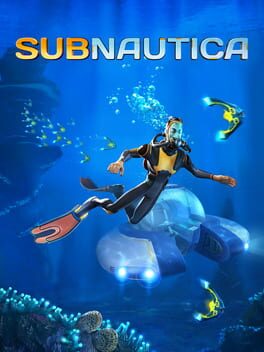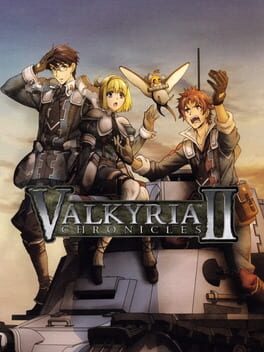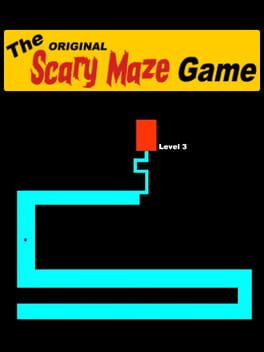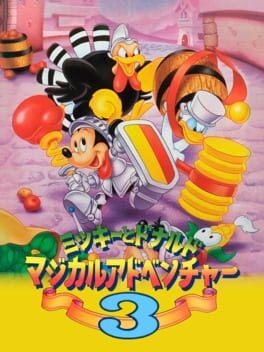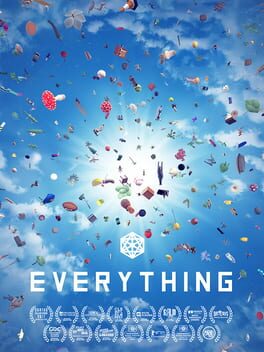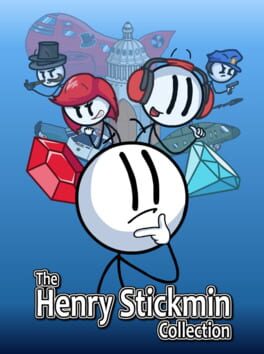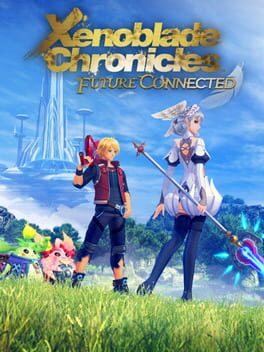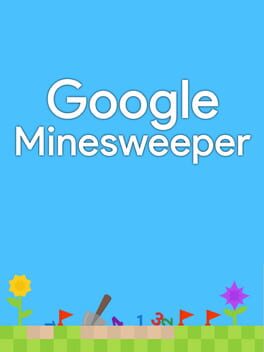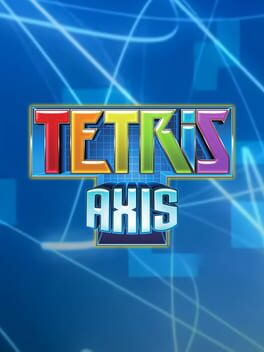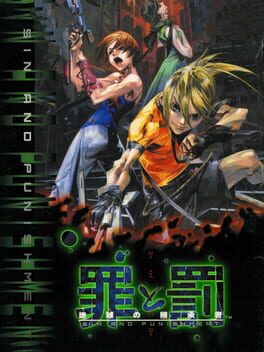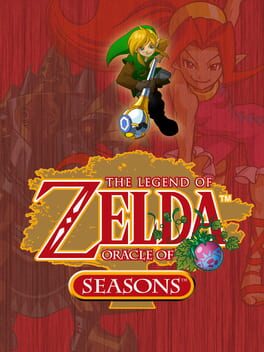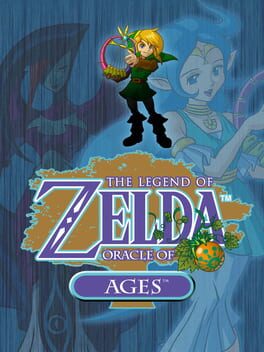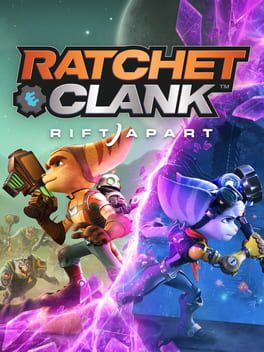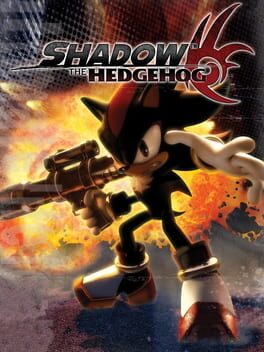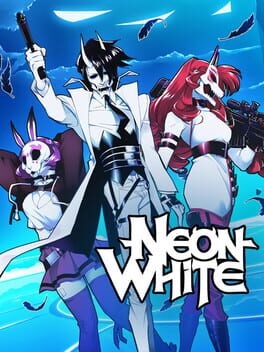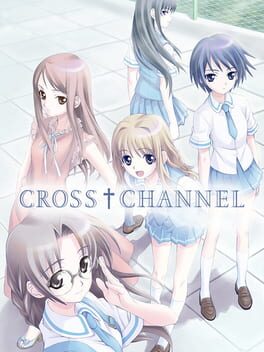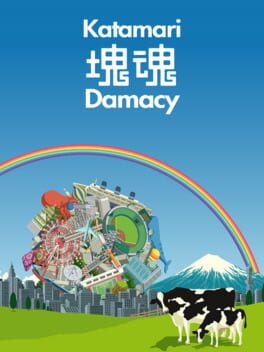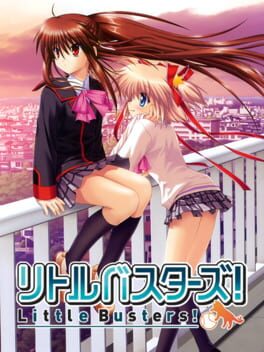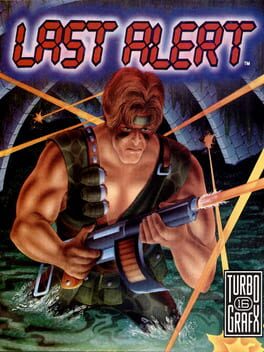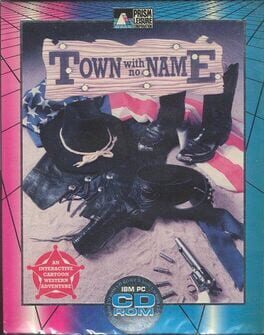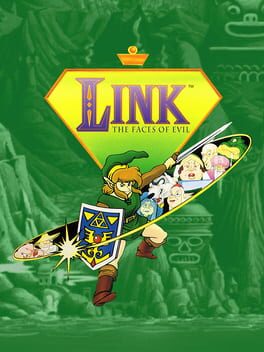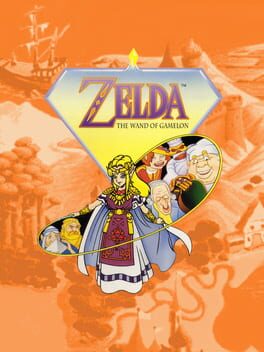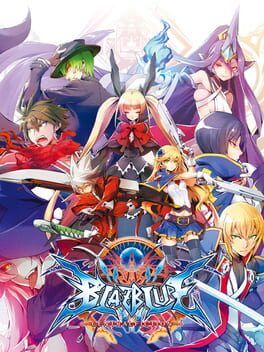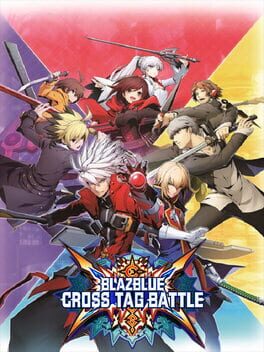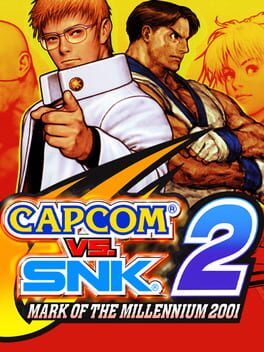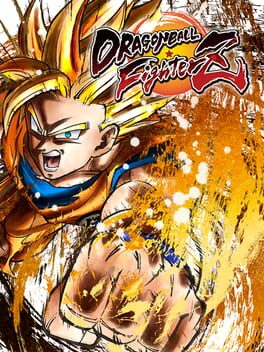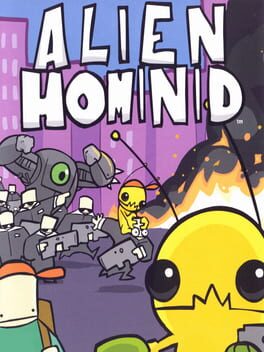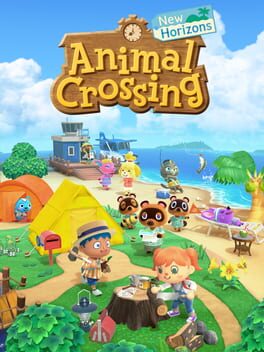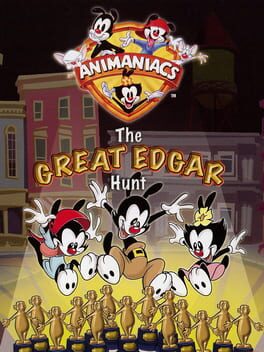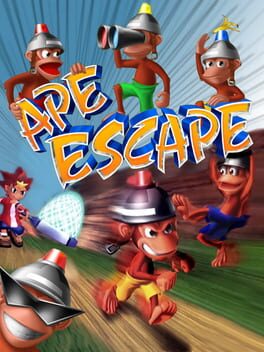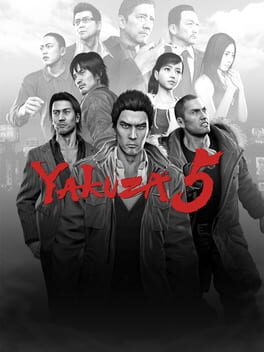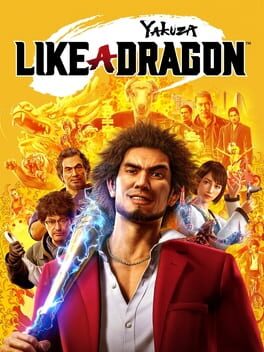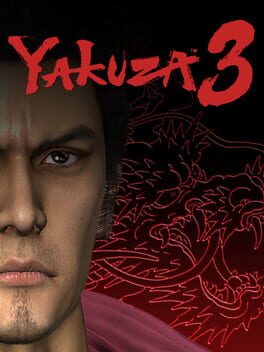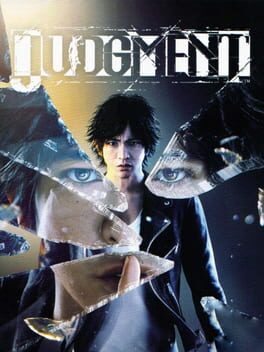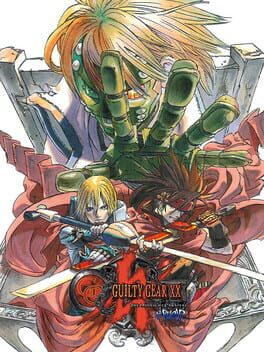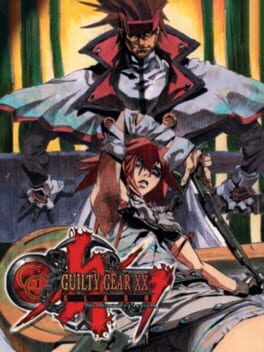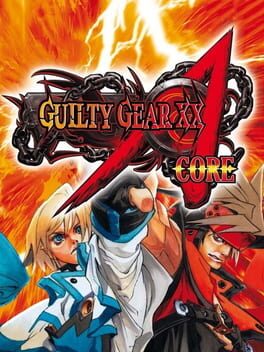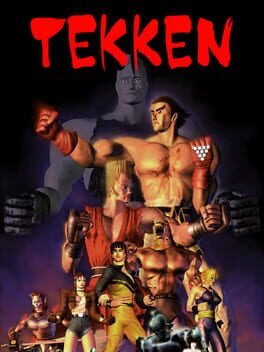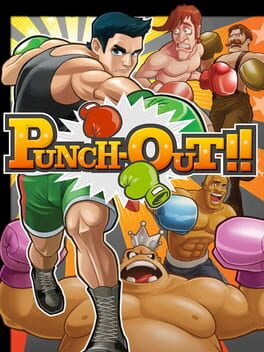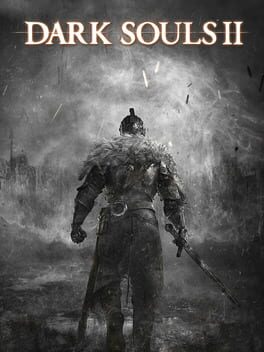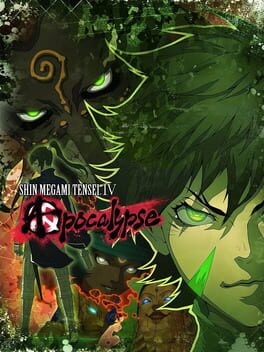Rowl_
2152 reviews liked by Rowl_
The Legend of Zelda
1986
First game syndrome am i right or am i right
I really don't got a lot to say or add to what's already been said by a lot of people so uh man where do i start. I guess there's no better way to start other than the gameplay wit this one and man is it rough which makes sense since it's the first zeldo game made so to give a quick run down it's a top down adventure it's quite simple ya press B to use whatever item you currently have equipped an A to swing your sword like that one tobuscus song now what your probably thinking is damn this bum has a massive skill issue if the games that simple and he's calling rough well ya see the thing is thag this game is way to fuckin cryptic i swear without a guide in the palm of your right hand you'll just be going around the land of bum fuck hyrule by trial and error which why ended up using a guide throughout the entirety of the first game i will say tho it i guess it's cool to see how basically one of nintendo 2nd biggest franchise started idk man kinda running out of things to say already so I'll the review here by sayin i feel like everyone should atleast try this game out once especially wit a series as big as zelda it's always nice to take a look at the humble beginnings of a big game franchise and seein how it all started
Small lil side tangent mostly about guides but i think guides or looking up info online is pretty great a lot of the times it can enhance your experience with whatever game you're playing since you're engaging with said game outside of just the realm of electronic vidja games Y'know know :)
I really don't got a lot to say or add to what's already been said by a lot of people so uh man where do i start. I guess there's no better way to start other than the gameplay wit this one and man is it rough which makes sense since it's the first zeldo game made so to give a quick run down it's a top down adventure it's quite simple ya press B to use whatever item you currently have equipped an A to swing your sword like that one tobuscus song now what your probably thinking is damn this bum has a massive skill issue if the games that simple and he's calling rough well ya see the thing is thag this game is way to fuckin cryptic i swear without a guide in the palm of your right hand you'll just be going around the land of bum fuck hyrule by trial and error which why ended up using a guide throughout the entirety of the first game i will say tho it i guess it's cool to see how basically one of nintendo 2nd biggest franchise started idk man kinda running out of things to say already so I'll the review here by sayin i feel like everyone should atleast try this game out once especially wit a series as big as zelda it's always nice to take a look at the humble beginnings of a big game franchise and seein how it all started
Small lil side tangent mostly about guides but i think guides or looking up info online is pretty great a lot of the times it can enhance your experience with whatever game you're playing since you're engaging with said game outside of just the realm of electronic vidja games Y'know know :)
The Legend of Zelda
1986
Before I start this review, I want to say that myself, NOWITSREYNTIME17, Phantasm, Steinco, & Ptcremisi are doing a Zelda marathon. Basically, we’re gonna be playing every mainline Zelda game and doing reviews for them! There are a few others who will be joining us during specific Zelda games, and I will mention them as those games come, please check everyone out I mention in these reviews! With that out of the way, onto the review!
The original Legend of Zelda was not only a phenomenal game for the time, but was also revolutionary in how games could be made. An entirely open-world to explore at your own discretion, no levels, no platforming, just you, your sword, and a vast world to see. I have always been rather fond of this title even as a kid, and I think it’s due to that unwavering wonder of the secrets that you have yet to uncover, the progression, and the general gameplay just being pretty decent, especially for an NES game. While I may not be the most fond of most NES games, Zelda 1 I actually do like, but it certainly has faults that hold it back, let’s get into it.
While Zelda 1 has some information in-game to help the player figure stuff out, there’s really no tutorials or any semblance of guidance within this game whatsoever. Granted, this is very common with NES games as most important information akin to tutorials were found within the instruction booklet, as well as the premise and story of the game. Zelda 1 is rather intuitive to figure out though, and the HUD of the game displays everything nice and neatly to not make it confusing. I rather like this aspect of NES games going straight into the game without tutorials or cutscenes to bog it down. Something that later Zelda games, such as Twilight Princess would become rather contentious for, having a long introduction before the game actually begins, likely leading to some becoming disinterested and dropping the game. While Zelda 1 doesn’t need to worry about this particular issue, it does have another rather specific problem.
Zelda 1 is far too cryptic for its own good. Now granted, this is indeed an old game, though how anyone could have figured this out back then or even now is beyond me. One specific example a lot of people like to bring up is the “bait” item you need for Level 7 to progress. There’s no indication you ever need this item, though every item in the shop does have a purpose and use, so perhaps more inquisitive players could figure it out, but it’s not likely. A better example I like to bring up is what you can interact with in the environment. In the Overworld, there’s plenty of walls you can bomb, and many bushes to burn, yet there is no indication you can do this, nor does the game provide a specific scenario to teach this to players. Again, this is an NES game, I don’t expect nor hold this game to a modern standard, however when the game begins to depend on the player to use this very method in later dungeons to progress, it can become rather frustrating for the player to figure out, which will lead them to looking up a guide or simply dropping the game entirely.
I’ve always labeled Zelda 1 as a “guide game”. Essentially, a game you need a guide for to actually enjoy playing it, or at the very least understand what to do, and where to go. While I can appreciate how cryptic the game can be, the age simply doesn’t allow for it to be fair, which isn’t really the game’s own fault, though I do wonder if the developers made certain interactable objects and walls more obvious, how much would that improve the experience? I’d argue a lot, since many Zelda games after this use a plethora of visual cues and tricks to ensure the player knows, or at least could reliably figure out something was destructible, or could be interacted with. Zelda 1 does not have this luxury, so I find using a guide is not shameful or a bad thing for Zelda 1, or really any game really, it’s up to the player to make that decision. Though with this particular game it’s almost necessary for a first-time player no matter what, which is a negative. With that said, I actually did not use a guide for this playthrough because I’ve played the game so many times and know where everything is. In that regard, the game is actually rather fun to play, though for a first-time player it might feel too much like a checklist of things to do that aren’t exactly varied in their execution to make it that interesting unlike later Zelda games, but not an inherent negative again because it is the first.
Now for some other thoughts I had on the game while playing it. I originally remembered the controls being a lot better than they were, but in this playthrough it definitely felt worse. While I was attacking or trying to place bombs, Link would sometimes just face a random direction, causing me to miss my attack or bomb placement and get hit or waste a bomb, which is an issue because bomb drops aren’t exactly common and very valuable to have in dungeons. Another issue I noticed is the knockback and lack of invulnerability frames. Once you get hit by an enemy, you will be knocked back, which is an issue in more crowded rooms in dungeons since you’ll continue being knocked into enemies, and there’s not much you can do about it except try and get to a safe spot as quickly as possible. While most enemies don’t do much damage overall, it really adds up overtime, and the fact heart and fairy drops are a luxury in this game, and you have a game that is not only difficult, but harrowing. Other issues with the game I had is some rooms in dungeons are too crowded, bubbles preventing you from attacking is annoying rather than challenging and just kills the flow of the game, a lot of the items you get in this game don’t feel overly useful except the wand, which is actually the best item you get in the game to me, especially when you upgrade it later with the book. The difficulty curve is rather steep past the third dungeon, and yet the difficulty in the seventh dungeon almost feels a bit easier due to the enemy’s as well as the boss being the same as the boss from the first dungeon, Aquamentus, which is odd. There’s no denying Dungeon seven is certainly harder in layout, but in enemy variety, not so much. Another issue I had is when dungeons start requiring you to use bombs to get to specific rooms. Now, again, there is no obvious tell which walls you can bomb, though the maps you get can be a good way to identify that, so it’s not too bad in the dungeons, the issue really is the bombs themselves. Bombs are finite, and they don’t drop often as I’ve said before, because of this, if you need a bomb to progress, you might just have to grind enemies for a while to do so. Now to the game’s credit, a lot of the time you need bombs to progress or complete the dungeon, the game is generous enough to provide them for you as long as you clear out the right room of enemies.
Now onto some positives! The overworld is beautifully woven together and has tons of different environments that break apart the map nicely and can allow you to memorize it. Another aspect of the Overworld I enjoy is how easy it is to get to places. It may seem a bit tedious at first, but with the warp points that are thoughtfully placed, as well as Link becoming more capable to explore the Overworld felt really satisfying and fun, plus the actual World design is quite good! A lot of the items you get in this game do feel pretty useful, if a bit situational. I enjoy the raft and stepladder, they’re nice additions, though I think the Stepladder is far better of an item than the raft of course. The enemy variety is outstanding for an NES game, tons of baddies to fight with unique designs and behaviors. While some can be a bit annoying like Darknuts and Wizzrobes, I felt like every enemy was genuinely well designed and fun to fight, though I do also think Like-Like’s are a bit too punishing, especially if you don’t understand what they can do, but that is the outlier. The sprite work is great, I ran into no glitches, the translation is awful which contributes to this game being too cryptic, but it does have a charm to it even if it’s a negative. The soundtrack despite only being four to five songs is great, never really grated on my ears for my three hour journey, and was happy to see the final dungeon get a unique song, helps it stand apart and make it feel more significant. I do like how each dungeon is in a specific shape, I also appreciate how they tried their best to make each dungeon stand out with a different color palette, it does help them distinguish themselves, even if the gameplay is very similar in each one for the most part.
The Legend of Zelda for its first outing is pretty impressive, I have to say. While it’s not anywhere near my favorite game, and I think the flaws are too heavy for me to rate it higher, I can recommend it to others easier than I could the first Metroid for example. For the first game in the Zelda marathon, not a bad start! I urge you all to read Reyn’s review, and Steinco's review for The Legend of Zelda, as well as everyone else’s in the marathon when they post theirs. I’ll be sure to edit my review to include them, so look out for that! Thank you all for reading my review! Still working hard on the VA-11 Hall-A review, so please look forward to that, as well as other reviews I have in the pipeline. For the Zelda marathon, up next is Zelda 2, last time I played it, I dropped it and never went back to it, so we’ll see how it goes this time. See you guys next review.
The original Legend of Zelda was not only a phenomenal game for the time, but was also revolutionary in how games could be made. An entirely open-world to explore at your own discretion, no levels, no platforming, just you, your sword, and a vast world to see. I have always been rather fond of this title even as a kid, and I think it’s due to that unwavering wonder of the secrets that you have yet to uncover, the progression, and the general gameplay just being pretty decent, especially for an NES game. While I may not be the most fond of most NES games, Zelda 1 I actually do like, but it certainly has faults that hold it back, let’s get into it.
While Zelda 1 has some information in-game to help the player figure stuff out, there’s really no tutorials or any semblance of guidance within this game whatsoever. Granted, this is very common with NES games as most important information akin to tutorials were found within the instruction booklet, as well as the premise and story of the game. Zelda 1 is rather intuitive to figure out though, and the HUD of the game displays everything nice and neatly to not make it confusing. I rather like this aspect of NES games going straight into the game without tutorials or cutscenes to bog it down. Something that later Zelda games, such as Twilight Princess would become rather contentious for, having a long introduction before the game actually begins, likely leading to some becoming disinterested and dropping the game. While Zelda 1 doesn’t need to worry about this particular issue, it does have another rather specific problem.
Zelda 1 is far too cryptic for its own good. Now granted, this is indeed an old game, though how anyone could have figured this out back then or even now is beyond me. One specific example a lot of people like to bring up is the “bait” item you need for Level 7 to progress. There’s no indication you ever need this item, though every item in the shop does have a purpose and use, so perhaps more inquisitive players could figure it out, but it’s not likely. A better example I like to bring up is what you can interact with in the environment. In the Overworld, there’s plenty of walls you can bomb, and many bushes to burn, yet there is no indication you can do this, nor does the game provide a specific scenario to teach this to players. Again, this is an NES game, I don’t expect nor hold this game to a modern standard, however when the game begins to depend on the player to use this very method in later dungeons to progress, it can become rather frustrating for the player to figure out, which will lead them to looking up a guide or simply dropping the game entirely.
I’ve always labeled Zelda 1 as a “guide game”. Essentially, a game you need a guide for to actually enjoy playing it, or at the very least understand what to do, and where to go. While I can appreciate how cryptic the game can be, the age simply doesn’t allow for it to be fair, which isn’t really the game’s own fault, though I do wonder if the developers made certain interactable objects and walls more obvious, how much would that improve the experience? I’d argue a lot, since many Zelda games after this use a plethora of visual cues and tricks to ensure the player knows, or at least could reliably figure out something was destructible, or could be interacted with. Zelda 1 does not have this luxury, so I find using a guide is not shameful or a bad thing for Zelda 1, or really any game really, it’s up to the player to make that decision. Though with this particular game it’s almost necessary for a first-time player no matter what, which is a negative. With that said, I actually did not use a guide for this playthrough because I’ve played the game so many times and know where everything is. In that regard, the game is actually rather fun to play, though for a first-time player it might feel too much like a checklist of things to do that aren’t exactly varied in their execution to make it that interesting unlike later Zelda games, but not an inherent negative again because it is the first.
Now for some other thoughts I had on the game while playing it. I originally remembered the controls being a lot better than they were, but in this playthrough it definitely felt worse. While I was attacking or trying to place bombs, Link would sometimes just face a random direction, causing me to miss my attack or bomb placement and get hit or waste a bomb, which is an issue because bomb drops aren’t exactly common and very valuable to have in dungeons. Another issue I noticed is the knockback and lack of invulnerability frames. Once you get hit by an enemy, you will be knocked back, which is an issue in more crowded rooms in dungeons since you’ll continue being knocked into enemies, and there’s not much you can do about it except try and get to a safe spot as quickly as possible. While most enemies don’t do much damage overall, it really adds up overtime, and the fact heart and fairy drops are a luxury in this game, and you have a game that is not only difficult, but harrowing. Other issues with the game I had is some rooms in dungeons are too crowded, bubbles preventing you from attacking is annoying rather than challenging and just kills the flow of the game, a lot of the items you get in this game don’t feel overly useful except the wand, which is actually the best item you get in the game to me, especially when you upgrade it later with the book. The difficulty curve is rather steep past the third dungeon, and yet the difficulty in the seventh dungeon almost feels a bit easier due to the enemy’s as well as the boss being the same as the boss from the first dungeon, Aquamentus, which is odd. There’s no denying Dungeon seven is certainly harder in layout, but in enemy variety, not so much. Another issue I had is when dungeons start requiring you to use bombs to get to specific rooms. Now, again, there is no obvious tell which walls you can bomb, though the maps you get can be a good way to identify that, so it’s not too bad in the dungeons, the issue really is the bombs themselves. Bombs are finite, and they don’t drop often as I’ve said before, because of this, if you need a bomb to progress, you might just have to grind enemies for a while to do so. Now to the game’s credit, a lot of the time you need bombs to progress or complete the dungeon, the game is generous enough to provide them for you as long as you clear out the right room of enemies.
Now onto some positives! The overworld is beautifully woven together and has tons of different environments that break apart the map nicely and can allow you to memorize it. Another aspect of the Overworld I enjoy is how easy it is to get to places. It may seem a bit tedious at first, but with the warp points that are thoughtfully placed, as well as Link becoming more capable to explore the Overworld felt really satisfying and fun, plus the actual World design is quite good! A lot of the items you get in this game do feel pretty useful, if a bit situational. I enjoy the raft and stepladder, they’re nice additions, though I think the Stepladder is far better of an item than the raft of course. The enemy variety is outstanding for an NES game, tons of baddies to fight with unique designs and behaviors. While some can be a bit annoying like Darknuts and Wizzrobes, I felt like every enemy was genuinely well designed and fun to fight, though I do also think Like-Like’s are a bit too punishing, especially if you don’t understand what they can do, but that is the outlier. The sprite work is great, I ran into no glitches, the translation is awful which contributes to this game being too cryptic, but it does have a charm to it even if it’s a negative. The soundtrack despite only being four to five songs is great, never really grated on my ears for my three hour journey, and was happy to see the final dungeon get a unique song, helps it stand apart and make it feel more significant. I do like how each dungeon is in a specific shape, I also appreciate how they tried their best to make each dungeon stand out with a different color palette, it does help them distinguish themselves, even if the gameplay is very similar in each one for the most part.
The Legend of Zelda for its first outing is pretty impressive, I have to say. While it’s not anywhere near my favorite game, and I think the flaws are too heavy for me to rate it higher, I can recommend it to others easier than I could the first Metroid for example. For the first game in the Zelda marathon, not a bad start! I urge you all to read Reyn’s review, and Steinco's review for The Legend of Zelda, as well as everyone else’s in the marathon when they post theirs. I’ll be sure to edit my review to include them, so look out for that! Thank you all for reading my review! Still working hard on the VA-11 Hall-A review, so please look forward to that, as well as other reviews I have in the pipeline. For the Zelda marathon, up next is Zelda 2, last time I played it, I dropped it and never went back to it, so we’ll see how it goes this time. See you guys next review.
The Legend of Zelda
1986
The one that started it all. The Backloggd-buddies @QuentTheSlayer @Phantasm and @Ptcremisi and I are partaking in a Zelda marathon organized by @NOWITSREYNTIME17.We are going through each mainline game in The Legend of Zelda franchise one by one and at the end of our playthrough we'll write a review on the game. I've always wanted to participate in a 'bookclub-esque' activity but with videogames and this is the perfect way to do it. If you are interested in reading in reading their reviews, here are the links to their pages:
Quent's review of The Legend of Zelda
NOWITSREYNTIME's review of The Legend of Zelda
I will be adding the other reviews once they become available.
Allow me to reminisce a bit first.
I first played a version of this game on my brother's PC sometime in the 90's probably. Much later I found out that I played the SatellaView version. I played a bit of this game as part of the Zelda Collection for GameCube. After that I bought the GBA version. I never got remotely far in any of my playthroughs but I did have a good time with trying to progress. But in all of my playthroughs, the cryptic nature of the game got the better of me. I almost never want to make use of guides for videogames because 'getting stuck' in a videogame is part of the fun for me.
The game starts and we're greeted by a pretty spiffy title screen. The logo is bright and colorful and beneath there's a waterfall going down, very cool. It's accompanied by the first rendition of the Legend of Zelda theme, of course the most iconic piece of music in the entire franchise. There's a title crawl that explains the story, really helpful. We're basically out to save the princess from the big bad.
Fun fact, Nintendo originally wanted to use Maurice Ravel's Bolero for the title screen but found out rather late in development that this music piece was not in the public domain yet. If they wanted to include it they had to wait an entire month to release the game and that wasn't happening so the composer basically pulled an all-nighter and churned out this gem of a theme song.
So we push start, pick a save file, name our character and we're off to the races. We're thrust into the land of Hyrule. We can go left, right or up but there's also a cave we can enter. Of course we enter the cave. We get the sword from the old man but we have to keep it a secret.
And now we go! The game begins! Go save the princess! Just do it! Where do we go? Figure it out!
So unless you know what you're doing or are playing this game with the help of a guide, you're lost. You have a big open world to explore, in the top left corner there's a map that basically tells you nothing except where you precisely are in the world. There are 8 dungeons, called levels in this game, all of them have a number so there's a way to tackle them chronologically. There are plentiful secrets in this game, a select few Heart Containers to find to expand your health, Warp Points, rupee stashes etc. But alas unless you have a guide you'll probably won't be able to find these goodies. Most of these collectables are hidden in walls that you have to bomb or underneath bushes (or are they trees?) that you have to burn but there are little to no contextual clues in the game as to which bushes or walls you have to burn or bomb respectively.
That is not to say that the developers didn't at least try. Sometimes rocks or statues with staircases beneath them that are conspicuously placed in a way that beg you to explore a bit.
Sure there are lot of instances of "how the hell was I supposed to figure that out by myself". But it's important to not get lost in these feelings of frustration. The first Legend of Zelda has a lot more to offer the player than simply granting them a glimpse of a bygone era in gaming or being viewed as a crusty old time capsule of a popular franchise. For a game that is so old, difficult and to be frank, obtuse, it still offers a sense of childlike wonder and curiosity. It's also the introduction of classic Zelda's addictive gameplay, something we'll discuss further in a bit.
It's important to mention that the developers were onto something here with this level of exploration but it would take a couple of years and a brand new console before these ideas would come into fruition in The Legend of Zelda: A Link to the Past for the Super Nintendo.
So by now I think I've made it clear that you need a guide in order to progress and finish this game. It's a "guide game" but not necessarily in the derogatory sense. Back when this game came out, they had old-fashioned guides and manuals to help players with this game. It's basically a part of the experience so there's no shame in using a guide. The videogame 'Tunic' tries to drive this point home by being a game that's clearly being inspired by The Legend of Zelda and you have to collect pieces of a manual in order to make sense of the game's rather cryptic nature.
If we're talking about gameplay, it's the first time we're introduced to the Zelda-formula. Explore the land, tackle dungeons, collect items which you can use for combat and/or explore. The whole world is basically at your feet but the more upgrades you collect, the more the world opens up to you. It's a really fun gameplay-loop and it remains incredibly satisfying to progress despite the fact that the game is showing its age.
Of course we have enemies to fight. The main attack you have is a forward stab, enemies are sometimes quick, nimble and unpredictable so be careful when and how you attack. There's quite a bit of delay between attacks so every sword stab matters more than you think. You can acquire a lot of upgrades like extra Hearts so you can take more hits, better armor, deadlier swords and health potions. Even though these are optional, you're going to need these, trust me.
You really need to prepare for the journey or else, get ready to get your shit kicked in. By the time you've reached Level 6 the game doesn't fuck around anymore. Enemies begin to swarm you in large numbers and hit like trucks. The game starts nice and easy before becoming absolutely relentless in its difficulty. Maybe I'm not a True Gamer™ but these difficulty spikes really threw me for a loop for some reason. It's to be expected of course, it's a game from 1987 and videogames were extremely difficult back then, be it for the sake of padding the game for home consoles or for gobbling up your quarters in the arcade. Anyways, read the guide and get these upgrades as soon as they become available.
As for the music, what's there to say, it's all so iconic. We got the title theme, the overworld theme, the treasure jingle, sound effects and compositions that are still being used to this day in Zelda games. Yeah it's archaic, sure, but it still manages to set itself apart from other NES soundtracks and you really get the feeling that you're setting off on a grand ol' adventure.
Would I recommend this game to any? Not necessarily, unless you have an interest in the Zelda-franchise and want to discover its history. Maybe you have an interest in game design and you want to know how things worked back in the day. Maybe you like the idea of working through a game with a guide or maybe by other means, like playing this game with friends and working through it thanks to each other's help.
For me personally, I always wanted to finish the first game of a franchise that I absolutely adore. And this marathon gave me plenty of reason to finally do it. And I'm glad I did but I'm also content that it's finally over. Now unto another game I tried multiple times but never finished: Zelda II: The Adventure of Link!
(I'm going to be so fucking relieved when we get to Link to the Past.)
Quent's review of The Legend of Zelda
NOWITSREYNTIME's review of The Legend of Zelda
I will be adding the other reviews once they become available.
Allow me to reminisce a bit first.
I first played a version of this game on my brother's PC sometime in the 90's probably. Much later I found out that I played the SatellaView version. I played a bit of this game as part of the Zelda Collection for GameCube. After that I bought the GBA version. I never got remotely far in any of my playthroughs but I did have a good time with trying to progress. But in all of my playthroughs, the cryptic nature of the game got the better of me. I almost never want to make use of guides for videogames because 'getting stuck' in a videogame is part of the fun for me.
The game starts and we're greeted by a pretty spiffy title screen. The logo is bright and colorful and beneath there's a waterfall going down, very cool. It's accompanied by the first rendition of the Legend of Zelda theme, of course the most iconic piece of music in the entire franchise. There's a title crawl that explains the story, really helpful. We're basically out to save the princess from the big bad.
Fun fact, Nintendo originally wanted to use Maurice Ravel's Bolero for the title screen but found out rather late in development that this music piece was not in the public domain yet. If they wanted to include it they had to wait an entire month to release the game and that wasn't happening so the composer basically pulled an all-nighter and churned out this gem of a theme song.
So we push start, pick a save file, name our character and we're off to the races. We're thrust into the land of Hyrule. We can go left, right or up but there's also a cave we can enter. Of course we enter the cave. We get the sword from the old man but we have to keep it a secret.
And now we go! The game begins! Go save the princess! Just do it! Where do we go? Figure it out!
So unless you know what you're doing or are playing this game with the help of a guide, you're lost. You have a big open world to explore, in the top left corner there's a map that basically tells you nothing except where you precisely are in the world. There are 8 dungeons, called levels in this game, all of them have a number so there's a way to tackle them chronologically. There are plentiful secrets in this game, a select few Heart Containers to find to expand your health, Warp Points, rupee stashes etc. But alas unless you have a guide you'll probably won't be able to find these goodies. Most of these collectables are hidden in walls that you have to bomb or underneath bushes (or are they trees?) that you have to burn but there are little to no contextual clues in the game as to which bushes or walls you have to burn or bomb respectively.
That is not to say that the developers didn't at least try. Sometimes rocks or statues with staircases beneath them that are conspicuously placed in a way that beg you to explore a bit.
Sure there are lot of instances of "how the hell was I supposed to figure that out by myself". But it's important to not get lost in these feelings of frustration. The first Legend of Zelda has a lot more to offer the player than simply granting them a glimpse of a bygone era in gaming or being viewed as a crusty old time capsule of a popular franchise. For a game that is so old, difficult and to be frank, obtuse, it still offers a sense of childlike wonder and curiosity. It's also the introduction of classic Zelda's addictive gameplay, something we'll discuss further in a bit.
It's important to mention that the developers were onto something here with this level of exploration but it would take a couple of years and a brand new console before these ideas would come into fruition in The Legend of Zelda: A Link to the Past for the Super Nintendo.
So by now I think I've made it clear that you need a guide in order to progress and finish this game. It's a "guide game" but not necessarily in the derogatory sense. Back when this game came out, they had old-fashioned guides and manuals to help players with this game. It's basically a part of the experience so there's no shame in using a guide. The videogame 'Tunic' tries to drive this point home by being a game that's clearly being inspired by The Legend of Zelda and you have to collect pieces of a manual in order to make sense of the game's rather cryptic nature.
If we're talking about gameplay, it's the first time we're introduced to the Zelda-formula. Explore the land, tackle dungeons, collect items which you can use for combat and/or explore. The whole world is basically at your feet but the more upgrades you collect, the more the world opens up to you. It's a really fun gameplay-loop and it remains incredibly satisfying to progress despite the fact that the game is showing its age.
Of course we have enemies to fight. The main attack you have is a forward stab, enemies are sometimes quick, nimble and unpredictable so be careful when and how you attack. There's quite a bit of delay between attacks so every sword stab matters more than you think. You can acquire a lot of upgrades like extra Hearts so you can take more hits, better armor, deadlier swords and health potions. Even though these are optional, you're going to need these, trust me.
You really need to prepare for the journey or else, get ready to get your shit kicked in. By the time you've reached Level 6 the game doesn't fuck around anymore. Enemies begin to swarm you in large numbers and hit like trucks. The game starts nice and easy before becoming absolutely relentless in its difficulty. Maybe I'm not a True Gamer™ but these difficulty spikes really threw me for a loop for some reason. It's to be expected of course, it's a game from 1987 and videogames were extremely difficult back then, be it for the sake of padding the game for home consoles or for gobbling up your quarters in the arcade. Anyways, read the guide and get these upgrades as soon as they become available.
As for the music, what's there to say, it's all so iconic. We got the title theme, the overworld theme, the treasure jingle, sound effects and compositions that are still being used to this day in Zelda games. Yeah it's archaic, sure, but it still manages to set itself apart from other NES soundtracks and you really get the feeling that you're setting off on a grand ol' adventure.
Would I recommend this game to any? Not necessarily, unless you have an interest in the Zelda-franchise and want to discover its history. Maybe you have an interest in game design and you want to know how things worked back in the day. Maybe you like the idea of working through a game with a guide or maybe by other means, like playing this game with friends and working through it thanks to each other's help.
For me personally, I always wanted to finish the first game of a franchise that I absolutely adore. And this marathon gave me plenty of reason to finally do it. And I'm glad I did but I'm also content that it's finally over. Now unto another game I tried multiple times but never finished: Zelda II: The Adventure of Link!
(I'm going to be so fucking relieved when we get to Link to the Past.)
The Legend of Zelda
1986
I know I'm still in the middle of another marathon (Kirby) but I've decided to also go through every Zelda game I own and can emulate because I've been in a big Zelda mood lately. Not only that, some other Backloggd members have also decided to join this marathon as well. Namely QuentTheSlayer, Ptcremisi,Steinco,Phantasm and a couple others. The four I mentioned plan on playing pretty much every game like I am, while the others plan on picking and choosing games they want to play. Either way, be sure to check out their accounts because they plan on putting out reviews for all the games too!
Anyways, The Legend of Zelda. I first played this game years ago on my brother's 3DS XL. He randomly bought this off the eShop and when he wasn't using his 3DS, I decided to actually try the first Zelda game out. I don't think I got far, and I didn't love it but it was neat finally trying this game out. Fast forward to 2020, I was trying to beat some games I started but never finished. Since I still had NSO, and I knew this game was on it, I decided to finally beat it once and for all. I did, and yeah I didn't like it all too much. I think I had to use save states, and definitely had to use a guide for most of it and that hampered my experience a lot. Coming back to it today tho, I say I still don't really like it all too much but it has its merits.
I guess I'll first go into the story of this game. Most future Zelda games also go by this same story structure as well, so get used to what I'm about to say. You play as Link, a young boy from the kingdom of Hyrule. You must rescue the princess of Hyrule, Zelda, from the big bad of this series, Ganon. You must collect the pieces of Triforce, which are used to stop Ganon, and they are split into 8 shards and are all found at the end of dungeons. The three pieces are the Triforce of Courage, Wisdom and Power. The specific pieces don't really come into play until later games, because that's if. That's the entire story of the first Zelda game. It's incredibly simple but it works, and these story details are the backbone of the entire Zelda series.
When you first start the actual game, the first thing you see on the first screen you're on, is an empty cave. You meet an old man, and he utters the now famous dialogue "It's dangerous to go alone, take this!". He hands you a sword and with that, you're free to explore the world of Hyrule. Exploring Hyrule can be pretty fun and frustrating on your first playthrough. On one hand, you'll be exploring everywhere trying to find each dungeon and trying to find any secrets you can. That can be very fun for people that just love to explore with almost zero direction, this is a game from 1986 so the best direction you'd get back then were vague hints or using an issue of Nintendo Power for help. This is 2024 tho, and you've been able to just look up a guide online for a while now, so that's what most players will do. And honestly, that's what I did and it's the best way to get through the overworld portions at least. See, this game's overworld relies on you finding random secrets you would only find by randomly guessing their locations or by using a guide. This game loves random bombable walls or random bushes you can burn, and while this only affects actually dungeons near the end, this is used for required items and also several rupee locations (that you WILL need) and so I think this is an unfun part of the overworld. If there was any indication the walls or bushes had secrets, it would be fine, but there isn't unless you find some very vague dialogue in game. That, plus just bombing a wall or burning a bush isn't really puzzle-like, which I would prefer in my Zelda overworlds. This is something future Zelda games improved on, but here, you might as well just use a guide to get most of the overworld stuff done first and then move onto the dungeons (that's what I did). I can see why some other people might find it more fun to constantly replay this game and actually memorize all the secrets, however I just don't think that's good game design and so I decided to do the whole overworld with a guide.
The dungeons themselves, while not great, are definitely the best part of this game. They are way less cryptic than the overworld, and thus are more fun. They can get pretty brutal near the end of the game, and also more confusing (they start to rely on bombable walls too) so I had to use a guide for the last couple as well. But in general, despite the simplicity, the dungeons are pretty fun. The bosses at the end of each dungeon are pretty easy but with this type of game, I'm fine with that since the bulk of the game is exploration. Something I didn't like, and I'm mentioning it here because it happens mostly in dungeons, is the fact you start with 3 health when you die. No matter how many heart containers you have, you'll always just start the game with 3 health and it's my biggest issue in the game because it's tedious having to get more health to have a fighting chance (since it's so easy to get hit in this game). Luckily, there are a couple fairy fountains that restore your health fully throughout the world, and there are caves that give you potions (believe me you will need these) so they make that whole health system a bit more tolerable. Going back to "since it's so easy to get hit in this game" whenever you get hid, there enemy pushes you back a bunch and because the invincibility frames are relatively short, it's not hard to get comboed by enemies and die. Now this didn't happen too much in my playthrough, but it can still be annoying. Outside of getting hit tho, Link plays well otherwise.
Inside the dungeons, and also outside in caves, you can collect different items that aid you in your adventure. You have some iconic items like the boomerang, bombs, a bow and arrows and ofc the iconic Rupees. You also have heart containers in this game, that you will want to find in all the caves and after each dungeon boss. There aren't heart pieces in this game, only containers, so each of them is super valuable. I won't get into all the main dungeon items, just know they're all pretty solid, but I will get into the clock. Sometimes when you kill an enemy, it drops a clock. When you pick up the clock, it stops every enemy in place if they're on the same screen you collected it on. This can be SO helpful in later encounters if you somehow are able to get one, it's very random tho so you better hope you get lucky. I also will say, one time during my playthrough, I killed three of these boomerang enemies and got three fairies at once from them. Idk how lucky that is but it seemed pretty insane.
The music in this game is simply iconic. The Title Theme(yes I shared the Famicom version, it's the best version) is probably my favorite song in the game and is the main theme of the entire franchise which makes sense since it's amazing. The overworld also uses a version of these theme and it's also very good. Picking up items and finding secrets also play jingles and they've been in pretty much every Zelda game since this one as well. If this game does anything super well, it's the sound design. There's a reason so much of it was reused for future titles lol.
While I don't care for the first Legend of Zelda all too much, due to the exploration secrets not being great and the 3 heart after death thing, I can't deny it's an iconic game and was very important in the grand scheme of things for the Zelda series. I don't love playing it, but I can certainly appreciate it for what it is.
Now that Zelda 1 is done, Zelda 2 is next. I actually have never played that one, and I haven't heard great things, so I'm worried I won't like it much but I guess we'll see. Look forward to that next.
Also, when I get to the 3D Zelda titles, I'll try to sprinkle in some smaller games in between but more importantly, I'll try to mix some Kirby games in between. Basically, I'll be doing a mix of Kirby and Zelda eventually. Just letting you know now since you'll eventually notice, I'm sure.
Anyways, The Legend of Zelda. I first played this game years ago on my brother's 3DS XL. He randomly bought this off the eShop and when he wasn't using his 3DS, I decided to actually try the first Zelda game out. I don't think I got far, and I didn't love it but it was neat finally trying this game out. Fast forward to 2020, I was trying to beat some games I started but never finished. Since I still had NSO, and I knew this game was on it, I decided to finally beat it once and for all. I did, and yeah I didn't like it all too much. I think I had to use save states, and definitely had to use a guide for most of it and that hampered my experience a lot. Coming back to it today tho, I say I still don't really like it all too much but it has its merits.
I guess I'll first go into the story of this game. Most future Zelda games also go by this same story structure as well, so get used to what I'm about to say. You play as Link, a young boy from the kingdom of Hyrule. You must rescue the princess of Hyrule, Zelda, from the big bad of this series, Ganon. You must collect the pieces of Triforce, which are used to stop Ganon, and they are split into 8 shards and are all found at the end of dungeons. The three pieces are the Triforce of Courage, Wisdom and Power. The specific pieces don't really come into play until later games, because that's if. That's the entire story of the first Zelda game. It's incredibly simple but it works, and these story details are the backbone of the entire Zelda series.
When you first start the actual game, the first thing you see on the first screen you're on, is an empty cave. You meet an old man, and he utters the now famous dialogue "It's dangerous to go alone, take this!". He hands you a sword and with that, you're free to explore the world of Hyrule. Exploring Hyrule can be pretty fun and frustrating on your first playthrough. On one hand, you'll be exploring everywhere trying to find each dungeon and trying to find any secrets you can. That can be very fun for people that just love to explore with almost zero direction, this is a game from 1986 so the best direction you'd get back then were vague hints or using an issue of Nintendo Power for help. This is 2024 tho, and you've been able to just look up a guide online for a while now, so that's what most players will do. And honestly, that's what I did and it's the best way to get through the overworld portions at least. See, this game's overworld relies on you finding random secrets you would only find by randomly guessing their locations or by using a guide. This game loves random bombable walls or random bushes you can burn, and while this only affects actually dungeons near the end, this is used for required items and also several rupee locations (that you WILL need) and so I think this is an unfun part of the overworld. If there was any indication the walls or bushes had secrets, it would be fine, but there isn't unless you find some very vague dialogue in game. That, plus just bombing a wall or burning a bush isn't really puzzle-like, which I would prefer in my Zelda overworlds. This is something future Zelda games improved on, but here, you might as well just use a guide to get most of the overworld stuff done first and then move onto the dungeons (that's what I did). I can see why some other people might find it more fun to constantly replay this game and actually memorize all the secrets, however I just don't think that's good game design and so I decided to do the whole overworld with a guide.
The dungeons themselves, while not great, are definitely the best part of this game. They are way less cryptic than the overworld, and thus are more fun. They can get pretty brutal near the end of the game, and also more confusing (they start to rely on bombable walls too) so I had to use a guide for the last couple as well. But in general, despite the simplicity, the dungeons are pretty fun. The bosses at the end of each dungeon are pretty easy but with this type of game, I'm fine with that since the bulk of the game is exploration. Something I didn't like, and I'm mentioning it here because it happens mostly in dungeons, is the fact you start with 3 health when you die. No matter how many heart containers you have, you'll always just start the game with 3 health and it's my biggest issue in the game because it's tedious having to get more health to have a fighting chance (since it's so easy to get hit in this game). Luckily, there are a couple fairy fountains that restore your health fully throughout the world, and there are caves that give you potions (believe me you will need these) so they make that whole health system a bit more tolerable. Going back to "since it's so easy to get hit in this game" whenever you get hid, there enemy pushes you back a bunch and because the invincibility frames are relatively short, it's not hard to get comboed by enemies and die. Now this didn't happen too much in my playthrough, but it can still be annoying. Outside of getting hit tho, Link plays well otherwise.
Inside the dungeons, and also outside in caves, you can collect different items that aid you in your adventure. You have some iconic items like the boomerang, bombs, a bow and arrows and ofc the iconic Rupees. You also have heart containers in this game, that you will want to find in all the caves and after each dungeon boss. There aren't heart pieces in this game, only containers, so each of them is super valuable. I won't get into all the main dungeon items, just know they're all pretty solid, but I will get into the clock. Sometimes when you kill an enemy, it drops a clock. When you pick up the clock, it stops every enemy in place if they're on the same screen you collected it on. This can be SO helpful in later encounters if you somehow are able to get one, it's very random tho so you better hope you get lucky. I also will say, one time during my playthrough, I killed three of these boomerang enemies and got three fairies at once from them. Idk how lucky that is but it seemed pretty insane.
The music in this game is simply iconic. The Title Theme(yes I shared the Famicom version, it's the best version) is probably my favorite song in the game and is the main theme of the entire franchise which makes sense since it's amazing. The overworld also uses a version of these theme and it's also very good. Picking up items and finding secrets also play jingles and they've been in pretty much every Zelda game since this one as well. If this game does anything super well, it's the sound design. There's a reason so much of it was reused for future titles lol.
While I don't care for the first Legend of Zelda all too much, due to the exploration secrets not being great and the 3 heart after death thing, I can't deny it's an iconic game and was very important in the grand scheme of things for the Zelda series. I don't love playing it, but I can certainly appreciate it for what it is.
Now that Zelda 1 is done, Zelda 2 is next. I actually have never played that one, and I haven't heard great things, so I'm worried I won't like it much but I guess we'll see. Look forward to that next.
Also, when I get to the 3D Zelda titles, I'll try to sprinkle in some smaller games in between but more importantly, I'll try to mix some Kirby games in between. Basically, I'll be doing a mix of Kirby and Zelda eventually. Just letting you know now since you'll eventually notice, I'm sure.
Subnautica
2014
Valkyria Chronicles 2 is the game I've championed most in my entire life; it has been unfairly maligned by the few who've heard about it, including by its own series fanbase. From the moment it was announced, this game was fighting an uphill battle - it was on the PSP, a handheld that was very much despised at the time, and not many people were willing to even give it a fair shake. It was a sequel to one of the most beautiful, originally designed PS3 games - how could a handheld version ever hope to measure up?
This parody video I watched before playing the game for the first time encapsulates the many criticisms faced by Valkyria Chronicles 2. A school setting? Preposterous! Valkyria Chronicles is a game for macho men who smoke Marlboros. Never mind that it's such an anime game that they adopt a pig with wings as their pet mascot, this is blasphemy!
A commercial failure in the West, so much so that the third game didn't even get localized, most people are willing to take VC2's criticisms at face value. But where it has languished in the public imagination, it sure captured mine. It did when I was 12, and it still does now that I'm 25. This is the number one contender for my favourite game of all time, with only Resident Evil 4 giving it a run for its money. I hope that by reading this, a few more people will be willing to give this game its fair shot, especially now that we're looking back and realizing the PSP was actually a pretty good system.
Valkyria Chronicles 2 is the best game in the series. Unable to deliver the huge, singular maps of the original game, it opted for smaller environments interlinked by base camps. This makes it a great deal more strategic than VC1, and incentivizes using more characters. Where VC1 was built around bolstering your units, whether through orders or physical support, and rushing the objective, VC2 grants you a motive to cut your enemy off. Units can be deployed from base camps immediately, instead of having to wait a turn. This means you can blitz enemy camps with your infantry to take them over, then deploy specialized anti-tank and shielded units from that same camp to clear them out. Lancers, hobbled in the first Valkyria Chronicles due to their low mobility, are far more useful this time around, and environmental effects can be negated or negotiated through proper customization of your tank or APC.
Orders (instabuffs given by your leading unit) are now more costly, lessening their potential for abuse from the first game. There are more specialized objectives than simply taking over base camps or killing all enemies: you may need to retrieve hidden packages around the map, or escort a vehicle across the battlefield without letting the enemy blow it up. It's clear to see that not only did this game manage to retain the core gameplay of the PS3 original, it improved it. Valkyria Chronicles 2 is painfully addictive, better balanced, and far more strategic.
The only flaw is the randomized credit system, which may decline to give you the required materials to change your characters to a different class. You can plan out by viewing what credits a mission gives in the briefing, and you can use your units accordingly, but luck is still involved.
This is an unpopular opinion, even among the series fanbase, but having replayed both games now I can say it with confidence: VC2 outshines VC1 even in its story. The premise of a civil war was one begging to be explored after the revelations of the original game. The 'school setting' is a military academy in a country whose army is so depleted through the events of the first game that soldiers-in-training now have to act as full soldiers. The villains are compelling, the protagonists are likeable, the English voice acting is vastly improved, and Raita Honjou's character designs still captivate. The story events are no longer rendered in real time, but the character portraits are satisfactory - in all honesty, an improvement, as less time is wasted waiting for their animation to complete - and the FMVs are beautiful anime cutscenes by A-1 Pictures.
I've played the Valkyria series many times in my life, and none of them have as memorable a cast as this one. The removal of permadeath (now 'dead' characters simply get hospitalized for the next three missions) is a welcome decision, because in the first game, there was always that temptation to avoid using non-leader units, because they could die permanently and force you to either restart the battle, or carry on without them. They were also far less fleshed out. In Valkyria Chronicles 2, every single side character has a story arc of their own, encouraging you to get to know them better and keep using them in battles - to have them grow on you both as people, and as soldiers. Of course, some homages to anime tropes are particularly blatant - one character straight up poses like Kira from Death Note - but so what? Why does VC2 in particular get singled out for being 'too anime?' Did the first game's designs not clue people in?
We knew VC2 could never match up to the PS3 original's spectacular visuals, but even by PSP standards, the graphics are nothing special. Character models are low-polygon with flat and basic textures, and there isn't a great deal of detail to the environments. That said, it's not a bad-looking game. The tank models are quite impressive, and everything that is necessary is easily visible. Do I wish this game looked better? Certainly. But it's not a huge sacrifice. From a gameplay perspective, nothing's been cut back on. The maps are rife with potential for strategic decisions, for defilade, for judging which unit can cover how much distance - and while it cannot port over VC1's raw beauty, it still brings over its personality. Machine guns still go RATTATATATA, laser attacks go FOOM FOOM FOOM FOOM FOOM, mortars go BAKOOM!, tanks go VRM VRM VRRRRM, and it's all backed up by good sound design and a stellar soundtrack. Those action onomatopes always entertained me, okay? They're important.
For me, Valkyria Chronicles 2 is a game that keeps on giving. Even after the credits roll, it has so much substance. This game deserves a reappraisal, and perhaps a remake for an audience that would be more receptive to it - anime is more mainstream now, the PSP isn't as hated, small-scale games are better appreciated instead of being lambasted for a lack of polygons, and men are allowed to vape grape juice. Sadly, I don't think it will ever happen. This is the red-headed stepchild with a red-headed protagonist of the series, and it will always be the scapegoat for why Valkyria Chronicles never had much of an impact in the West. But I urge you to play it regardless. Mired in the swamp of pre-judgement - the graphics aren't as pretty, the characters are too cliche, the Valkyrias' titties are too big or aren't big enough - this is, in truth, Valkyria Chronicles at its incredible peak. What a game. How much it has meant to me over the years.
Give this game a chance. Do it for me. I'll be your best friend.
This parody video I watched before playing the game for the first time encapsulates the many criticisms faced by Valkyria Chronicles 2. A school setting? Preposterous! Valkyria Chronicles is a game for macho men who smoke Marlboros. Never mind that it's such an anime game that they adopt a pig with wings as their pet mascot, this is blasphemy!
A commercial failure in the West, so much so that the third game didn't even get localized, most people are willing to take VC2's criticisms at face value. But where it has languished in the public imagination, it sure captured mine. It did when I was 12, and it still does now that I'm 25. This is the number one contender for my favourite game of all time, with only Resident Evil 4 giving it a run for its money. I hope that by reading this, a few more people will be willing to give this game its fair shot, especially now that we're looking back and realizing the PSP was actually a pretty good system.
Valkyria Chronicles 2 is the best game in the series. Unable to deliver the huge, singular maps of the original game, it opted for smaller environments interlinked by base camps. This makes it a great deal more strategic than VC1, and incentivizes using more characters. Where VC1 was built around bolstering your units, whether through orders or physical support, and rushing the objective, VC2 grants you a motive to cut your enemy off. Units can be deployed from base camps immediately, instead of having to wait a turn. This means you can blitz enemy camps with your infantry to take them over, then deploy specialized anti-tank and shielded units from that same camp to clear them out. Lancers, hobbled in the first Valkyria Chronicles due to their low mobility, are far more useful this time around, and environmental effects can be negated or negotiated through proper customization of your tank or APC.
Orders (instabuffs given by your leading unit) are now more costly, lessening their potential for abuse from the first game. There are more specialized objectives than simply taking over base camps or killing all enemies: you may need to retrieve hidden packages around the map, or escort a vehicle across the battlefield without letting the enemy blow it up. It's clear to see that not only did this game manage to retain the core gameplay of the PS3 original, it improved it. Valkyria Chronicles 2 is painfully addictive, better balanced, and far more strategic.
The only flaw is the randomized credit system, which may decline to give you the required materials to change your characters to a different class. You can plan out by viewing what credits a mission gives in the briefing, and you can use your units accordingly, but luck is still involved.
This is an unpopular opinion, even among the series fanbase, but having replayed both games now I can say it with confidence: VC2 outshines VC1 even in its story. The premise of a civil war was one begging to be explored after the revelations of the original game. The 'school setting' is a military academy in a country whose army is so depleted through the events of the first game that soldiers-in-training now have to act as full soldiers. The villains are compelling, the protagonists are likeable, the English voice acting is vastly improved, and Raita Honjou's character designs still captivate. The story events are no longer rendered in real time, but the character portraits are satisfactory - in all honesty, an improvement, as less time is wasted waiting for their animation to complete - and the FMVs are beautiful anime cutscenes by A-1 Pictures.
I've played the Valkyria series many times in my life, and none of them have as memorable a cast as this one. The removal of permadeath (now 'dead' characters simply get hospitalized for the next three missions) is a welcome decision, because in the first game, there was always that temptation to avoid using non-leader units, because they could die permanently and force you to either restart the battle, or carry on without them. They were also far less fleshed out. In Valkyria Chronicles 2, every single side character has a story arc of their own, encouraging you to get to know them better and keep using them in battles - to have them grow on you both as people, and as soldiers. Of course, some homages to anime tropes are particularly blatant - one character straight up poses like Kira from Death Note - but so what? Why does VC2 in particular get singled out for being 'too anime?' Did the first game's designs not clue people in?
We knew VC2 could never match up to the PS3 original's spectacular visuals, but even by PSP standards, the graphics are nothing special. Character models are low-polygon with flat and basic textures, and there isn't a great deal of detail to the environments. That said, it's not a bad-looking game. The tank models are quite impressive, and everything that is necessary is easily visible. Do I wish this game looked better? Certainly. But it's not a huge sacrifice. From a gameplay perspective, nothing's been cut back on. The maps are rife with potential for strategic decisions, for defilade, for judging which unit can cover how much distance - and while it cannot port over VC1's raw beauty, it still brings over its personality. Machine guns still go RATTATATATA, laser attacks go FOOM FOOM FOOM FOOM FOOM, mortars go BAKOOM!, tanks go VRM VRM VRRRRM, and it's all backed up by good sound design and a stellar soundtrack. Those action onomatopes always entertained me, okay? They're important.
For me, Valkyria Chronicles 2 is a game that keeps on giving. Even after the credits roll, it has so much substance. This game deserves a reappraisal, and perhaps a remake for an audience that would be more receptive to it - anime is more mainstream now, the PSP isn't as hated, small-scale games are better appreciated instead of being lambasted for a lack of polygons, and men are allowed to vape grape juice. Sadly, I don't think it will ever happen. This is the red-headed stepchild with a red-headed protagonist of the series, and it will always be the scapegoat for why Valkyria Chronicles never had much of an impact in the West. But I urge you to play it regardless. Mired in the swamp of pre-judgement - the graphics aren't as pretty, the characters are too cliche, the Valkyrias' titties are too big or aren't big enough - this is, in truth, Valkyria Chronicles at its incredible peak. What a game. How much it has meant to me over the years.
Give this game a chance. Do it for me. I'll be your best friend.
Mother 3
2006
Chapter One
A child ran off from their village, filled with rage. A petty kind of anger; one that the child would have all but forgotten about the next time you saw them. This next time would never come, though. The child disappeared and in their place stood a Destroyer.
Chapter Two
The village seemed different. Strange new people kept showing up, with pig shaped masks covering their eyes. On the surface, they went about their business and chatted like any other villager but the more mind you paid them, the more their words rang hollow. Their thoughts and jokes seemed inorganic; mass produced even. As these Pigmasks gathered in the village, the original people there felt alienated. An old man, once known for his insights and his sharp wit would get angrier and angrier, lashing out at those around him and eventually leaving. More villagers would follow suit, some of them against their will, as this community they saw as a safe haven to share things they couldn’t share anywhere else slowly but surely became part of that “anywhere else.”
Were these Pigmasks to blame for everything? Or was it merely a case of things that always infested the community finally bubbling up to the surface? And what of the Destroyer, a one-time villager, now hailed as the champion of the Pigmasks?
Chapter Three
A monkey walked through a forest with boxes on their back; head and torso fighting a fierce battle to not fall and hit the ground. This grueling process eventually became routine and the monkey’s body eventually went on autopilot. They had all this time to think about if they’ll ever move past this task and if they’ll ever have a purpose.
Did the Destroyer have the same thoughts in this same forest?
Chapter Four
Another village child was not unlike the one who would become the Destroyer. In fact, you could say that these two village children were a single entity; two sides of the same coin. The Destroyer was the head of this coin, facing up and always the topic of conversation from those who saw this “face.” The tail, stuck to the ground, reveled in the attention the head received. They took glee in seeing friends talk about the Destroyer without any clue of its relation to the one standing near them. They searched for other villagers’ words on this mysterious Destroyer and snuck into houses to see them: the praise, the insults, the natural discussions surrounding this new “symbol” of the village.
This was not healthy for the village child. But still, could you blame them? This sensation of feeling important, even if that importance was just a niche micro-celeb in a small village, was much more comforting than the cold reality of meaning nothing in the grand scheme of things.
Chapter Five
A Pigmask working in a tower was a big fan of a rock band. They were utterly awestruck at the sight of that band’s merchandise on the man that entered the tower earlier that day and could not talk about anything other than that band: expressing their love of the band’s work, idolizing the ones behind it as supposedly great people, and elevating the band to some moral paragon because of milquetoast political opinions in its songs.
The Destroyer was in the tower too, watching this Pigmask’s conversation with mere apathy if not active contempt.
Chapter Six
Sometimes, ghosts of the past appear as reminders of what will never come back.
Chapter Seven
The Destroyer pulled a needle out of the ground and felt nothing. They pulled quite a bit of these needles before but something was different this time. The act was now done only out of some perceived obligation; to the Pigmasks and villagers cheering on or to the fake images of hearts that result from the act. It was time for the last needle to be pulled.
Chapter Eight
The Destroyer laid on the ground motionless as its tail pulled the final needle on its behalf. Its supposed stardom was crushed into not even half a star.
It’s over.
A child ran off from their village, filled with rage. A petty kind of anger; one that the child would have all but forgotten about the next time you saw them. This next time would never come, though. The child disappeared and in their place stood a Destroyer.
Chapter Two
The village seemed different. Strange new people kept showing up, with pig shaped masks covering their eyes. On the surface, they went about their business and chatted like any other villager but the more mind you paid them, the more their words rang hollow. Their thoughts and jokes seemed inorganic; mass produced even. As these Pigmasks gathered in the village, the original people there felt alienated. An old man, once known for his insights and his sharp wit would get angrier and angrier, lashing out at those around him and eventually leaving. More villagers would follow suit, some of them against their will, as this community they saw as a safe haven to share things they couldn’t share anywhere else slowly but surely became part of that “anywhere else.”
Were these Pigmasks to blame for everything? Or was it merely a case of things that always infested the community finally bubbling up to the surface? And what of the Destroyer, a one-time villager, now hailed as the champion of the Pigmasks?
Chapter Three
A monkey walked through a forest with boxes on their back; head and torso fighting a fierce battle to not fall and hit the ground. This grueling process eventually became routine and the monkey’s body eventually went on autopilot. They had all this time to think about if they’ll ever move past this task and if they’ll ever have a purpose.
Did the Destroyer have the same thoughts in this same forest?
Chapter Four
Another village child was not unlike the one who would become the Destroyer. In fact, you could say that these two village children were a single entity; two sides of the same coin. The Destroyer was the head of this coin, facing up and always the topic of conversation from those who saw this “face.” The tail, stuck to the ground, reveled in the attention the head received. They took glee in seeing friends talk about the Destroyer without any clue of its relation to the one standing near them. They searched for other villagers’ words on this mysterious Destroyer and snuck into houses to see them: the praise, the insults, the natural discussions surrounding this new “symbol” of the village.
This was not healthy for the village child. But still, could you blame them? This sensation of feeling important, even if that importance was just a niche micro-celeb in a small village, was much more comforting than the cold reality of meaning nothing in the grand scheme of things.
Chapter Five
A Pigmask working in a tower was a big fan of a rock band. They were utterly awestruck at the sight of that band’s merchandise on the man that entered the tower earlier that day and could not talk about anything other than that band: expressing their love of the band’s work, idolizing the ones behind it as supposedly great people, and elevating the band to some moral paragon because of milquetoast political opinions in its songs.
The Destroyer was in the tower too, watching this Pigmask’s conversation with mere apathy if not active contempt.
Chapter Six
Sometimes, ghosts of the past appear as reminders of what will never come back.
Chapter Seven
The Destroyer pulled a needle out of the ground and felt nothing. They pulled quite a bit of these needles before but something was different this time. The act was now done only out of some perceived obligation; to the Pigmasks and villagers cheering on or to the fake images of hearts that result from the act. It was time for the last needle to be pulled.
Chapter Eight
The Destroyer laid on the ground motionless as its tail pulled the final needle on its behalf. Its supposed stardom was crushed into not even half a star.
It’s over.
Alright. The time has passed, and I don't have to pretend this is the best thing ever anymore. Armored Core VI has a SHIT ton of problems. The biggest thing is that it's nothing bold or interesting. It's actually a downgrade to many previous games in the series with fewer parts and less part types and less in game mechanics in general. Whilst I don't dislike this game a whole lot, I am in the end an Armored Core fan and wish for the series to improve. First off, the sekiro stagger meter was an awful design choice for this game. It makes fights that should be two giant mechs with a shit ton of fire power just going off on each other but instead your mechanised combat machine staggers. It interrupts the flow of combat, and it makes fights feel so much less tense because you can straight up see their health bar and how close they are to getting staggered by you. The soundtrack is... not very great. While there are some standouts, the track list is quite boring. I'm a huge fan of cyberpunk sounds and the influence from vangelis is a great thing to hear but it just doesn't make for a very good soundtrack over mecha fights none of the song particularly get you hyped up or get your blood pumping or stressed it's just pretty normal stuff. The mission design is actually pretty good and is pretty on par with an Armored Core game specifically its more like AC4/4A, which usually did things much nicer. The lack of parts is quite a bummer to me and even if the mission designs are good there isn't a mission that's like super grand and amazing that makes me feel like it's utilising two generations more of power compared to For Answer. You'd think that after being told we were getting a new Armored Core for a decade and being told it was being cooked, we'd get something you know, bold. Something that does something interesting and cool, yet we get heals and a stagger bar, which is just so disappointing from a new gen Armored core game that should be huge and unique. Also, the multiplayer is like for answer in the way that it feels super haphazardly thrown together with no real thoughts about how fun it actually is. It's quite mediocre. I'm not a very big fan of the 5th generation but they had very engaging multiplayer that has kept people invested for a decade (which they now shut down cause come play our mediocre new multiplayer instead of your cool clan wars.) it's just such a disappointing thing to see. The game is just a standard Armored core experience, which makes it such a disappointment to me having to wait all this time. It'll be fine to a newcomer to Armored core because they didn't have to wait for so long and be forced to expect more. Is Armored Core VI the worst thing ever or the worst Armored Core game? No, it's just extremely safe. You could tell they wanted to cater to some souls fans too with healing and the more forgiving tracking. I think it's fine. Hopefully they do something more interesting for the next Armored Core game. I didn't wish to speak much on the story because I think it is just fine. Its quite a normal mecha story with some memorable moments but usually quite normal. The final boss also boils down to almost the same thing in each ending which was disappointing. I think the endings were fine though so there's that.
The Scary Maze Game
2003
This review contains spoilers
AAAAAAAAAAAAAAAAAAAAAAAAAAAAAAAAAAAAAAAAAAAAAAAAAAAAAAAAAAAAAAAAAAAAAAAAAAAAAAAAAAAAAAAAAAAAAAAAAAAAAAAAAAAAAAAAAAAAAAAAAAAAAAAAAAAAAAAAAAAAAAA!!!!!!!!!!!!!!!!!!!!!!
It's the scary maze game, what else is there to say? It's a short maze game where you get jumpscared right at the end when you're focused. It's kind of clever how the last path is narrow so you have to lean forward only to then get hit by the jumpscare.
That said, the novelty wore off very quick. It was good while it lasted, and now it's just a footnote in internet history.
Colorblindness Rating: A
There's no problem here.
It's the scary maze game, what else is there to say? It's a short maze game where you get jumpscared right at the end when you're focused. It's kind of clever how the last path is narrow so you have to lean forward only to then get hit by the jumpscare.
That said, the novelty wore off very quick. It was good while it lasted, and now it's just a footnote in internet history.
Colorblindness Rating: A
There's no problem here.
The third game in the Magical Quest series and definitely the best one so far. This game didn't see a release in the west until the bad GBA port, but thank god for translation romhacks.
Just like the 2nd game in the series, the Great Circus, this also feels like a direct sequel to both the first 2 games in the series as it uses the exact same engine, sprites, gameplay, mechanics etc. You could also safely call this an expansion, so if you also liked the first 2 games you will also like this one.
So what makes this slightly better than the first 2 is that the game feels more consistent. The level design is at it's best so far and feels the most fair. The bosses are the funnest bosses to fight so far. The theme of the levels are even cooler since the story of this game takes place in a fantasy book. And of course, the 3 new costumes you get in this game are easily the best.
The knight costume gives you a shield and an extended boxing glove that Bugs Bunny usually likes you to use. Easily my favorite costume of all 3 games so far.
You get a wood cutter costume that does NOT give you an axe, but rather a whip which you can use like castlevania, while fun the hitbox of the whip can be a little weird.
The final costume being the magician where you shoot magic doves as projectiles. The cool thing with this is that the dove turns bad things into good things. e.g. spiky balls turn into harmless bouncy balls, scorpion tails turn into flowers etc.
While I liked the first 2, there were still some rough parts in it's level and boss design that felt cheap. In this game, you can go from start to finish and have a good time the whole way through. A great platformer on the SNES that I wish initially released to the west. But as of now, it's a hidden gem.
Just like the 2nd game in the series, the Great Circus, this also feels like a direct sequel to both the first 2 games in the series as it uses the exact same engine, sprites, gameplay, mechanics etc. You could also safely call this an expansion, so if you also liked the first 2 games you will also like this one.
So what makes this slightly better than the first 2 is that the game feels more consistent. The level design is at it's best so far and feels the most fair. The bosses are the funnest bosses to fight so far. The theme of the levels are even cooler since the story of this game takes place in a fantasy book. And of course, the 3 new costumes you get in this game are easily the best.
The knight costume gives you a shield and an extended boxing glove that Bugs Bunny usually likes you to use. Easily my favorite costume of all 3 games so far.
You get a wood cutter costume that does NOT give you an axe, but rather a whip which you can use like castlevania, while fun the hitbox of the whip can be a little weird.
The final costume being the magician where you shoot magic doves as projectiles. The cool thing with this is that the dove turns bad things into good things. e.g. spiky balls turn into harmless bouncy balls, scorpion tails turn into flowers etc.
While I liked the first 2, there were still some rough parts in it's level and boss design that felt cheap. In this game, you can go from start to finish and have a good time the whole way through. A great platformer on the SNES that I wish initially released to the west. But as of now, it's a hidden gem.
326 lists liked by Rowl_
by Odyssey3004 |
50 Games
by sleepytitan |
13 Games
by Clorth |
40 Games
by MikoMango |
54 Games
by stovetop |
39 Games
by mogchamp |
14 Games
by Odyssey3004 |
68 Games
by CodeNameYogurt |
14 Games

